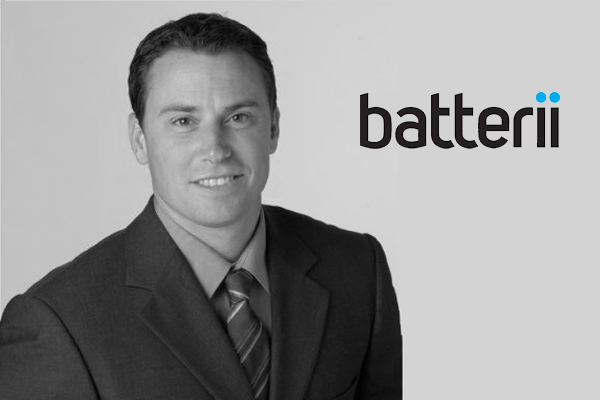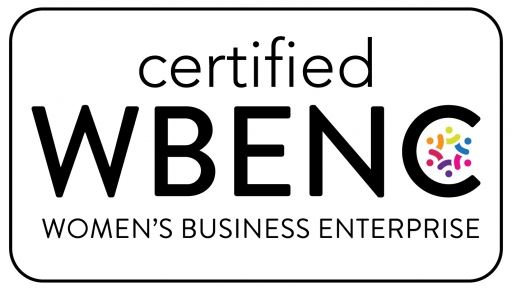
Stephen Jordan is the Director of Innovation Strategy at Batterii, a Cincinnati tech startup with a mission to empower people to make a difference as creative collaborators. We sat down with Stephen to pick his brain about his biggest inspirations, what he gained from 15 years in the corporate world and the lessons he’s learned transitioning into startup life.
Now that you’ve transitioned to the startup world from a more corporate environment, what do you wish you had known in your old role that you know now? How would you have approached your job and/or business challenges differently? I wish I’d understood more about using empathy, and I wish that I had been exposed to human-centered design and those mindsets and methods when I was in my corporate roles. It’s amazing how ripe for innovation corporate spaces are and how many potential projects and culture shifts could take place with a few changes to the typical analytical organizational process. There are all kinds of issues that could benefit from the approaches we use in design thinking; I wish I hadn’t taken the classic stakeholder mapping, business process mapping approach when I worked in a corporate environment. I know now that there’s a consultant approach and a designer approach to problem-solving, and I wish I had applied the latter a bit more.
What is one thing you didn’t expect about the startup world? I like to use the phrase, “I knew it, but I didn’t understand it.” I had heard of what it was like to work for a startup; I knew you have to sell yourself and wear a lot of hats, but I didn’t fully understand the full scope of what that meant until I was in it. For example, I had never done marketing before, but when I got to Batterii, I helped come up with a strategy, made content, and managed social accounts–and now, I’m doing things like looking at a CRM system replacement. I used to be an IT guy, but now I’m doing everything. I have so much freedom and I’ve grown so much, but I can see how people who are used to delegating might find it hard to work for a startup, because we’re all just doing all the time.
What are some lessons you learned from the corporate world that you’ve applied to Batterii? It’s important to look at the big picture… and to not panic about stuff. When I was at Pfizer, they laid off 70,000 people in five years. At Qualcomm, they were growing a lot and I had the opportunity to learn from the innovation team and do a lot of forecasting. And through the insights I learned by doing that work, I realized there were going to be a lot of layoffs. They had already laid off 10-20% of company at that point. When you go through a lot of layoff cycles, you get used to the new regime bringing in new ways of doing things, which gives you healthy skepticism and perspective. It makes you take in a “big picture” view. I think what it’s enabled me to do in my current role is to ask “why?” a lot. Why would we do prospecting vs. inbound marketing? Why would we target this particular consumer? Time moves so fast, and startups see things at a million miles an hour, and we’re all doing everything at once. That “big picture” perspective I got from my corporate jobs gave me a sense of place in the process, which now helps me to stay calm and avoid being reactive in stressful situations.
What do you personally do to get and stay inspired? I don’t really get inspired by talk circuits and books and conferences. I get more inspired by the moon-shot kind of stuff (like SpaceX); I get excited about the off-the-wall projects that completely transform things into something unexpected. I’m a big fan of Elon Musk’s work; I also go on Kickstarter and Indiegogo a lot to see what new innovations are being developed. I love seeing the real stuff coming to life. I love seeing those people who are making science projects to try and get plastic out of the ocean, things like that. That kind of stuff is just so true to design thinking, and it’s about trying and failing fast, looking at where there’s a need. They’re not just talking and waxing poetic about innovation; they’re solving real problems and are actively creating what’s next. What those creative, productive people are doing is enough to inspire me.
How can companies work toward becoming more innovative? Creating an innovation framework and having a macro-level business model is great, but what I believe in more is building the individual capability of your employees first. It’s as much about culture and talent than it is about pipelines, KPIs and metrics. It’s a slow walk, but teaching them new ways of thinking, tools and methods to apply consistently over time will increase innovation in the entire company. I don’t think a lot of companies are willing to invest that much time in their employees to that level, and I just wish more people would recognize that the key to improvement starts with the people.
Who are some of your biggest mentors or role models in the innovation space? I’m a fan of Tom Kelley and Tim Brown of IDEO. They have critics, but they take that criticism with a grain of salt and strongly believe in the ethos of their brand. You can tell that they’re not arrogant, and that they are trying to make their brand of innovation accessible to everyone. They even open source their framework for NGOs and nonprofits. It’s inspiring that they were able to design and perfect their process to the point that they can take it mainstream.
How have you fostered disruptive innovation at Batterii? We haven’t been around all that long, but what we’re trying to do is to make some of that agency magic more accessible to people. Design firms and agencies can deliver a presentation full of insights, but the teams don’t have access to the behind-the-scenes stuff. We are trying to include more people in all stages of the process. We’re able to offer companies the option of opening the door to people working on their own or with an agency, where every person can now be involved at each stage of the process–from ethnography to coming up with insights and brainstorming ideas. This ensures that the output is more collaborative and inclusive throughout each stage. We’re essentially enabling companies to open the curtain and let folks into the process who weren’t exposed to early phases. This is considered very disruptive in terms of how CPG companies tend to approach innovation. We’re not trying to destroy the mystery of their process; rather, we’re hopefully giving those companies a way to include clients earlier on and be more transparent–if, and only if, they want to.
What else are you working on at Batterii that you’re excited about? Right now, we’re trying to solve for how to combine the best of digital technology with the magic of an in-person workshop. We started purely digital, and over the past year, we’ve been adding in a ton of web features around moveable walls, power dotting and evaluation. But we’re trying to figure out how to add value to that; for example, maybe we could enable people to do digital touchpoints and reach-outs before meetings and then gather and store work at the end of the workshop in order to keep collaborating. The question for us is, how do you do innovation digitally and then seamlessly switch between the digital and physical realms? You don’t want to lose the energy of a physical session by going digital, but you don’t want to have to transcribe, etc. when digital technology could make things easier. We’re at the point where we’ve built this great digital software that works well with digital teams, but how do we make it useful for practitioners who like live workshops? We’ll be working a lot in that space in the months to come.


